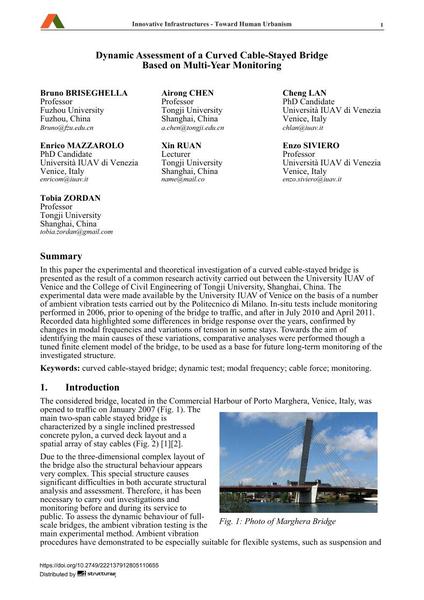Dynamic Assessment of a Curved Cable-Stayed Bridge Based on Multi-Year Monitoring

|
|
|||||||||||
Détails bibliographiques
| Auteur(s): |
Bruno Briseghella
Airong Chen Cheng Lan Enrico Mazzarolo Xin Ruan Enzo Siviero Tobia Zordan |
||||
|---|---|---|---|---|---|
| Médium: | papier de conférence | ||||
| Langue(s): | anglais | ||||
| Conférence: | 18th IABSE Congress: Innovative Infrastructures – Towards Human Urbanism, Seoul, Korea, 19-21 September 2012 | ||||
| Publié dans: | IABSE Congress Seoul 2012 | ||||
|
|||||
| Page(s): | 406-413 | ||||
| Nombre total de pages (du PDF): | 8 | ||||
| DOI: | 10.2749/222137912805110655 | ||||
| Abstrait: |
In this paper the experimental and theoretical investigation of a curved cable-stayed bridge is presented as the result of a common research activity carried out between the University IUAV of Venice and the College of Civil Engineering of Tongji University, Shanghai, China. The experimental data were made available by the University IUAV of Venice on the basis of a number of ambient vibration tests carried out by the Politecnico di Milano. In-situ tests include monitoring performed in 2006, prior to opening of the bridge to traffic, and after in July 2010 and April 2011. Recorded data highlighted some differences in bridge response over the years, confirmed by changes in modal frequencies and variations of tension in some stays. Towards the aim of identifying the main causes of these variations, comparative analyses were performed though a tuned finite element model of the bridge, to be used as a base for future long-term monitoring of the investigated structure. |
||||
